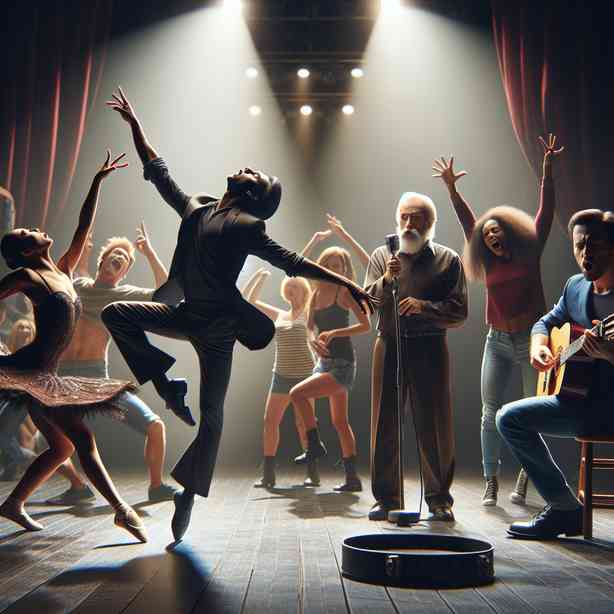
The experience of rehearsing can often transform into an unexpected performance, one that not only showcases artistic talent but also reveals the intricate layers of creativity, collaboration, and personal growth. This phenomenon occurs across various disciplines, from theater and dance to music and visual arts. When artists come together in a space of preparation, the energy that flows can sometimes ignite an impromptu display of their craft, evolving what was meant to be a practice session into a performance that captivates both the performers and those who witness it.
Rehearsals are generally designed to fine-tune skills, allowing individuals and ensembles to hone their techniques and synchronize their efforts. The atmosphere during these sessions is typically one of preparation, filled with repetitive drills and constructive feedback. However, the essence of art often lies in spontaneity. When performers feel a sense of comfort and trust in their surroundings, the barriers that usually separate practice from performance begin to dissolve. Suddenly, movements become more fluid, notes resonate more deeply, and the story being told transcends the script or the score.
One of the most compelling elements of a rehearsal-turned-performance is the way it harnesses the collective energy of the performers. In moments of inspiration, artists may take creative risks, leading to a flourishing of ideas that had not been considered in previous practices. For instance, a dancer might explore a new interpretation of a movement sequence, revealing emotional depths that elevate the choreography. Similarly, musicians might improvise solos that add an unexpected layer of complexity to the piece they are rehearsing. These spontaneous bursts of creativity are often what audiences find most engaging; they can feel the raw emotion and authenticity in the performance, as if they are witnessing a unique moment that may never be captured again.
Furthermore, the transition from rehearsal to performance can be a significant turning point for individual artists. It can build confidence and reinforce a sense of belonging within the group. When a rehearsal unexpectedly blossoms into a performance, it creates a shared experience that strengthens the bonds among performers. This camaraderie can lead to an atmosphere where everyone feels free to express themselves without fear of judgment, encouraging innovative ideas and interpretations. The organic nature of this transformation can lead to profound moments of connection, not just among the performers themselves but also between the performers and their audience.
An essential factor in this transformation is the interaction with the audience. During rehearsals, the presence of an audience is often absent, allowing performers to experiment without the pressure of external judgment. However, once an audience is introduced—whether intentionally or by chance—the energy in the room shifts. Performers become acutely aware of their audience’s reactions, and this dynamic can fuel their performance. An audience that responds positively can serve as a catalyst for greater expression, motivating performers to give their all. In turn, the audience becomes privy to a unique experience, witnessing the raw energy of a rehearsal transformed into a lively performance. This interaction creates a level of engagement that rehearsals alone cannot provide.
It is also worth noting how this phenomenon manifests in various art forms. In theater, for instance, actors might find themselves slipping into character more profoundly when the laughter or gasps of an audience resonate in the space. In dance, the shared rhythm established with the audience can elevate the dancers’ energy. Musicians find equal satisfaction when audience members sway, clap, or cheer in unison, amplifying their passion. Visual artists, too, can find that when their work is shared with onlookers, it takes on a new life and meaning, activating conversations and emotions that were previously dormant.
The spontaneous performance aspect can even foster learning and growth. For newer artists, being part of such an experience can be incredibly inspiring. They witness firsthand how the principles and techniques honed in rehearsal can come alive in a shared moment with an audience. This kind of learning is invaluable, as it encourages the idea that art is a living, breathing entity—always evolving and open to interpretation. Veteran artists, on the other hand, may find renewed motivation and inspiration from these unexpected performances, rejuvenating their passion for their craft.
In conclusion, the transition from rehearsal to performance is a remarkable journey that speaks to the heart of the artistic process. This transformation showcases the power of collaboration, the significance of audience interaction, and the profound emotional connections that are often established in the creative arts. What begins as a simple practice session can evolve into a dynamic exchange that enriches both the performers and their viewers. As artists embrace the unpredictable nature of their craft, they not only amplify their own creative expression but also invite their audience to share in the magic of the moment.


